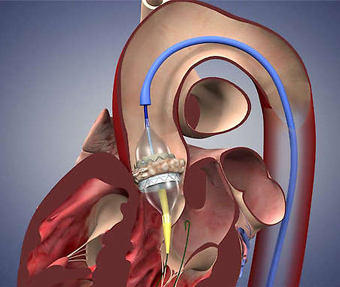Video: Advancing Aortic Stenosis Treatment Using TAVR with Dr. Alan Malki
By Adam Pick on June 30, 2014
With 500+ social shares, my last post about CoreValve’s accelerated FDA approval suggests that our community is really interested to learn more about transcatheter aortic valve replacement (TAVR) procedures.
To help us learn more about TAVR, I recently met with Dr. Alan Malki at the St. Bernardine Medical Center in San Bernardino, California. In this video, you will get additional insights from Dr. Malki, who has performed of 2,000 valvular operations, about the treatment of severe aortic stenosis using TAVR devices.
I would like to thank Dr. Malki for taking the time to film this educational video with me. I would also like to thank Dr. Malki for successfully treating so many patients from our community — including Jeanne Baker and Jackie Shafer. 🙂
Written Transcript of My Video Interview with Dr. Malki
For the hearing impaired members of our community, I have posted a written transcript of my interview with Dr. Malki about TAVR procedures.
Dr Malki says: I’m a cardiothoracic surgeon. I practice cardiothoracic surgery at St. Bernadine Medical Center. In my 25 years of practice, I’ve performed over 5,000 open heart procedures. Out of all the rotations that I did as a medical student and later on as a surgical resident, I was most excited by the prospect of being able to fix the functioning of the heart, as well as, the anatomy of the heart. It is just as fascinating to me today as it was when I first saw it.

Predominantly we perform open heart procedures on adults which consist of coronary bypass surgery and valve surgeries which include repairs of valves and also replacement of valves. The most common type of valve procedure we perform is a valve replacement on the aortic valve for aortic stenosis or narrowing.
TAVR stands for Transcatheter Aortic Valve Replacement. Transcatheter refers to the approach. In other words, this is not done as the conventionally open procedure. The sternum does not have to be opened. It’s usually done through the femoral artery, through the groin. The catheter is inserted into the artery with a needle and then the wire is advanced through the valve and then the device is passed over that wire; through the valve itself after all the calculations have been made and the positioning of the valve is determined.

The advantage of a TAVR procedure is to provide for the patient a valve replacement without being exposed to a very significant operation as it was conventionally done. The approval process started off by allowing the procedure to be performed on patients who were inoperable. They were elderly. They had many other medical problems. They had poor heart function and these patients would not have tolerated an operation without a high risk of death.
There are several studies that are on-going and most of them relate to patient selection. They’re trying to expand the indications for TAVR to a larger group of patients that are perhaps not as high-risk as the initial group. TAVR is very important for St. Bernadine because it allows us to provide a service that is much needed for a very large segment of the population. I see patients everyday who are now referred for surgery because their physicians thought that they would be too high a risk to undergo surgery. This expands the pool of patients that can be treated and may provide the patients for better quality of life.
My advice for any patient considering a TAVR procedure would be to do their individual research, to consider all the options that are being exposed to you, but ultimately, you’re going to be putting yourself in the hands of people who are professional, who are capable, who have studied this to the ultimate degree and have advanced understanding as well as what it will take to perform the procedure carefully and safely.
Keep on tickin!
Adam













